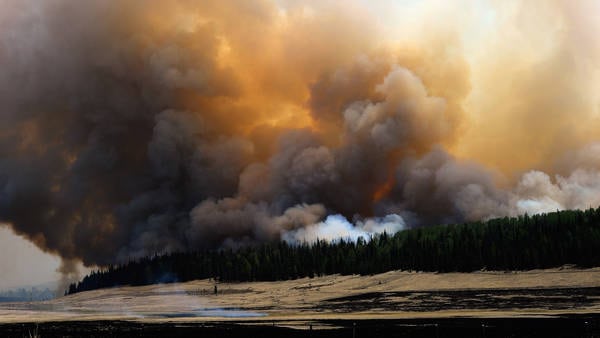
From the Denver Post here.
DECKERS — The U.S. Forest Service has deployed a river-restoration guru in a $4.5 million gambit to accelerate recovery on a first segment of the South Platte tributaries ruined a decade ago by a massive human-caused wildfire.
The project launched this week by foresters and private-sector partners will try to rework the altered flow of Trail Creek to make it more natural.
For Fort Collins-based hydrologist Dave Rosgen, this also is a chance to demonstrate techniques increasingly in demand worldwide.
The problem is that the aftermath of the Hayman fire unleashed torrents of sediment — sand and decomposed Pikes Peak granite — that slumps from barren mountainsides into an estimated 157 miles of streams.
Before the 2002 fire, for example, Trail Creek carried 1,200 tons of sediment a year. Now foresters say 20,000 tons a year course through the creek, which flows into West Creek, Horse Creek and then the South Platte River, which is the major source of water for people in the Denver metropolis.
Denver Water managers’ struggle to manage the sediment in both Cheesman and Strontia Springs reservoirs is driving up monthly water bills. At Strontia Springs, the utility is involved in a $29 million project to dredge out 675,000 tons of sediment.
Enter Rosgen.
“This is how Mother Nature does it,” he said Friday, describing his plan to stabilize what has become a sluice for corrosive sediment.
The steep banks will first be reshaped, and fallen tree trunks will be used to reinforce the new channel. Then, the stream bed will be raised by about 7 feet so water carrying sediment disperses into a willow studded plane instead of racing down stream.
“We’re going to basically go back in here and re-establish a braided, meandering channel,” Rosgen, 69, told a gathering of county and federal employees.
Amid budget-cutting, federal environmental stewards have turned to private-sector partners for help containing the damage. The National Forest Foundation and the Coalition for the Upper South Platte coordinated funding, with contributions of $750,000 from ski goliath Vail Associates, $500,000 from Aurora Water and $200,000 from the Gates Family Foundation.
Rosgen has developed formulas for calculating rates of erosion, enabling detailed analysis of mountain slopes, fire impact and hydrology. His team at Wildland Hydrology Inc. has restored dozens of damaged streams in Argentina, Costa Rica, Tanzania and around the western United States.
Ever since the Hayman fire, heavy rains have led to increasingly severe flooding across the scorched burn area. Foresters and volunteers have tried to address this, planting 3.5 million tree seedlings.
“But it seems that 137,000 acres doesn’t heal as quickly as we’d like it to,” said Pikes Peak District Ranger Brent Botts.
Eroding mountainsides and clogged streams eventually would stabilize on their own, Rosgen said, but not until the whole area burned by the fire is reforested — a process expected to take 80 years. Meanwhile, the growing Front Range population demands water and healthy mountain fisheries for wildlife and recreation.
That forces a decision of whether to intervene by re-engineering key tributaries, Rosgen said. “We’ll work with the river, not against it” with a goal of “getting back to a natural rate of erosion that is acceptable,” he said.
Over the next year, his crews with heavy machinery “will come as close as we can to duplicating the stable natural form of the rivers and their processes,” Rosgen said. “We will become a copycat of nature.”








